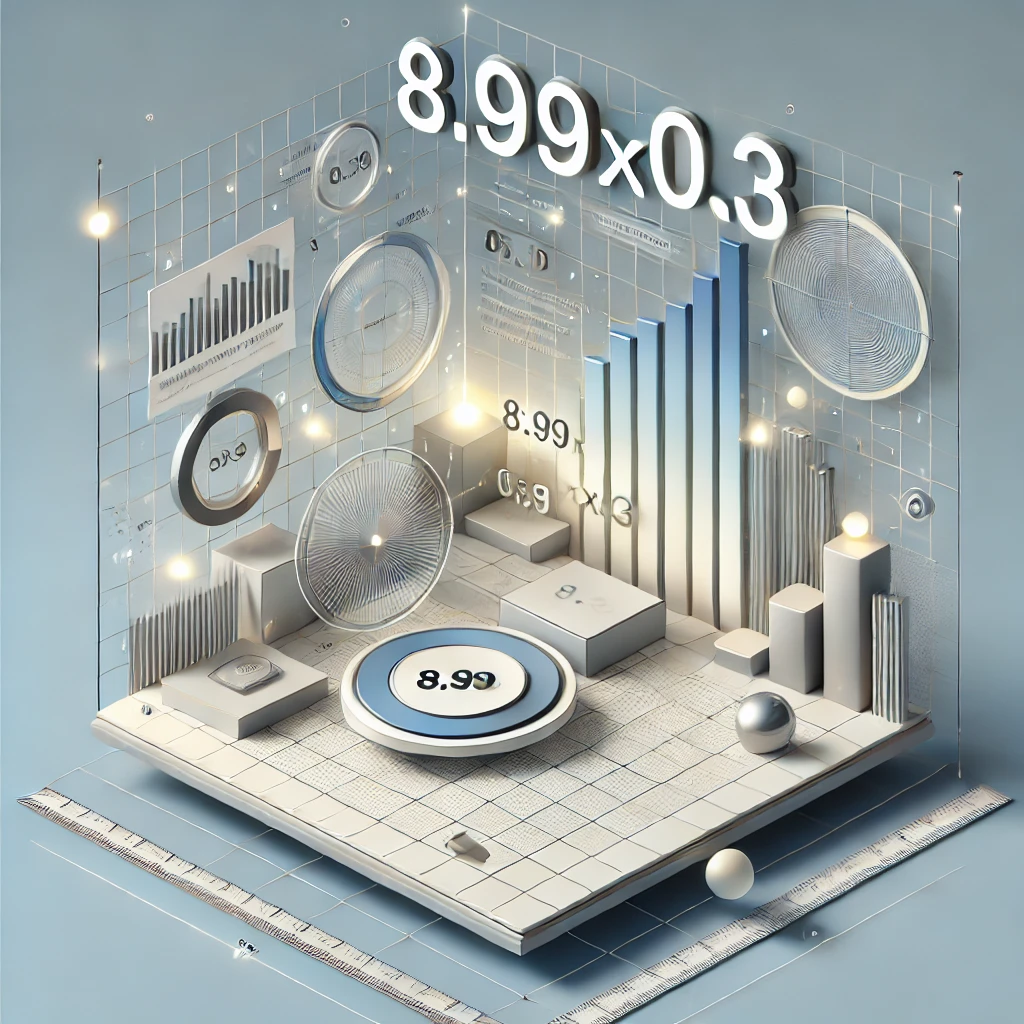You’ve probably seen “8.99×0.3” and thought, “Wait, why does this even matter?”
Here’s the thing: this little math problem isn’t just numbers on a screen—it’s a shortcut to understanding percentages, quick calculations, and even daily decisions like splitting bills or calculating discounts.
So, why should you care about “8.99×0.3”?
Because it’s everywhere in real life, and knowing it can save you time and even money.
The Fast Answer to 8.99×0.3: What’s the Result?
Before we get into the nitty-gritty, here’s the quick answer:
8.99 multiplied by 0.3 equals 2.697.
If you’re just here for the math, there you go.
But if you’re curious about why this matters and how you can use it practically, stick around.

Why Does 8.99×0.3 Matter in Real Life?
Think about the last time you:
- Calculated a 30% discount while shopping.
- Split a restaurant bill with friends.
- Estimated a partial payment or proportion of something.
8.9 9×0.3 is a perfect example of a calculation you might encounter in these situations.
Let’s say you see a $8.99 price tag on a cute coffee mug, and the store offers a 30% discount.
Instead of whipping out your calculator and panicking in the checkout line, you’ll know the discount is $2.697, bringing the price down to around $6.29.
What’s the Easiest Way to Tackle 8.99×0.3?
Let’s break it down step by step so it’s easy to follow:
- Understand the “0.3”:
- It’s just another way of saying 30%.
- Think of percentages as decimals: 30% = 0.3, 50% = 0.5, and so on.
- Do the Multiplication:
- Multiply 8.99 by 0.3 directly.
- The result? 2.697.
- Round It If You Need To:
- Most prices and discounts round to two decimal places, so $2.70 works perfectly.
Real-Life Examples of 8.99×0.3 in Action
Here’s where it gets fun.
Example 1: Grocery Shopping
You’re grabbing a snack that costs $8.99, and the store has a 30% off sale.
Use 8.99×0.3 to calculate your savings: $2.70.
Now subtract it: $8.99 – $2.70 = $6.29. Boom, deal sealed.
Example 2: Splitting Costs with Friends
Your group decides to split a total cost of $8.99, and you’re covering 30% of it.
Multiply 8.99×0.3, and your share comes out to $2.70.
It’s that simple.
Why You Don’t Need a Calculator for 8.99×0.3
Here’s the good news: you can mentally calculate this in seconds with a little trick.
- Round 8.99 to 9 for a quicker estimate.
- Multiply 9×0.3, which equals 2.7.
- Adjust slightly if precision matters.
Most of the time, people won’t notice the tiny difference, and this shortcut works like a charm.
FAQs About 8.99×0.3
What is the exact result of 8.99×0.3?
The exact answer is 2.697.
How does this calculation relate to percentages?
“0.3” represents 30%. Multiplying a number by 0.3 gives you 30% of that number.
Can this be applied to other numbers?
Absolutely! Just swap 8.99 with any number and multiply by 0.3 to find 30% of it.
Why not just use a calculator?
Sure, you can. But understanding how it works helps you do quick mental math when you don’t have one handy.

Pro Tip: Apply 8.99×0.3 Beyond Discounts
- Budgeting: If you want to allocate 30% of your income or expenses.
- Health Goals: Calculate 30% of your daily calorie intake.
- Savings Plans: Figure out 30% of a total amount to save.
Quick Reference for Similar Multiplications
Here’s a cheat sheet for common calculations:
- 8.99×0.1 (10%) = 0.899
- 8.99×0.2 (20%) = 1.798
- 8.99×0.5 (50%) = 4.495
Wrapping It Up: Why “8.99×0.3” Matters
Whether you’re shopping, budgeting, or just trying to keep track of numbers, 8.99×0.3 is one of those little tricks that’s incredibly practical.
Once you get the hang of it, you’ll find similar calculations popping up everywhere.
So next time you see a percentage or a fraction, you’ll know exactly how to handle it.
And remember: 8.99×0.3 = 2.697—your secret weapon for quick math.